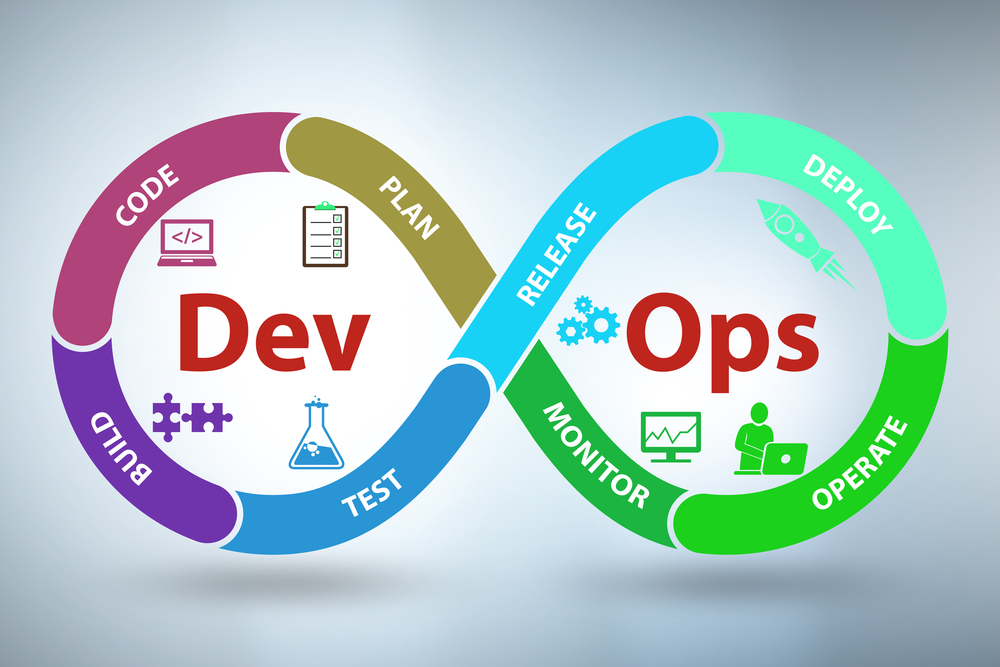
Technical debt isn’t just an inconvenience on the way to getting data insights. It can have profound consequences for companies seeking digital transformation and survival post-pandemic. The public is less forgiving than ever of company missteps, and if they turn out to be unavoidable, companies may suffer from the consequences of technical debt for years.
See also: What is MLOps? The Elements of a Basic MLOps Workflow
And while companies definitely don’t want to replicate the same problems they have in current technology stacks when moving to the cloud, cloud environments do offer a way to minimize technical debt with the right strategies. Fortunately, DevOps techniques provide a powerful set of tools and practices that can be used to reduce technical debt in cloud-based data science environments. In this article, we’ll look at three DevOps techniques that can be used to manage technical debt, as well as their practical applications in cloud-based data science environments.
Understanding Technical Debt in Cloud-Based Data Science Environments
Technical debt happens when developers take shortcuts in the development process, leading to decreased code quality and increased maintenance requirements over time. Each developer solves an immediate challenge through one of these shortcuts, making it more difficult for future developers to understand what’s happening the next time something goes wrong. In cloud-based data science environments, technical debt can be particularly challenging to manage due to the complexity and scalability of these environments.
Technical debt can manifest itself in a variety of ways in cloud-based data science environments. For instance, manual infrastructure provisioning can lead to inconsistencies and increased maintenance requirements over time. Additionally, ad hoc code changes can lead to version control issues and reduced code quality.
Furthermore, data scientists may face different challenges in managing technical debt due to the rapidly evolving nature of cloud-based data science environments. As cloud infrastructure and services continue to evolve, new technical debt may arise, requiring data scientists to remain vigilant in managing technical debt.
See also: Data Pipeline Pitfalls: Unraveling the Technical Debt Tangle
Leveraging DevOps techniques to avoid replicating technical debt in the cloud
Principle DevOps techniques can help companies and engineering teams reduce the chances of replicating technical debt when adopting cloud computing. Here are three pillars of DevOps
Continuous Integration (CI)
Continuous Integration (CI) is a DevOps technique sees developers regularly integrating code changes into a shared repository instead of working in a silo. This technique can help data scientists manage technical debt by identifying code integration issues early in the development process, reducing the risk of introducing technical debt into production environments.
To implement CI in cloud-based data science environments, data scientists can leverage continuous integration tools explicitly designed with CI principles in mind. These tools provide a range of features such as automated testing, code reviews, and integration with source control systems like Git, helping data scientists identify code integration issues before they impact production environments.
Continuous Delivery (CD)
Continuous Delivery (CD) is a DevOps technique that involves automating the deployment of code changes to production environments. CD can help data scientists manage technical debt by reducing the risk of human error during manual deployment processes.
To implement CD in cloud-based data science environments, data scientists can leverage tools such as Kubernetes or Docker. These tools provide a range of features, such as automated deployment, blue-green deployments, and automatic scaling, helping data scientists reduce technical debt associated with manual deployment processes.
Infrastructure as Code (IaC)
Infrastructure as Code (IaC) is a DevOps technique that involves automating infrastructure provisioning using code. IaC can help data scientists manage technical debt by reducing the risk of inconsistencies associated with manual infrastructure provisioning processes.
To implement IaC in cloud-based data science environments, data scientists can leverage tools that provide a range of features such as infrastructure automation, version control, and infrastructure testing. These help data scientists and engineering teams reduce technical debt associated with manual infrastructure provisioning processes.
Practical Applications of DevOps Techniques in Cloud-Based Data Science Environments
Let’s illustrate the practical applications of DevOps techniques in cloud-based data science environments through two common scenarios: infrastructure provisioning and code deployment.
Infrastructure Provisioning
In cloud-based data science environments, infrastructure provisioning can be a significant source of technical debt due to the complexity of these environments. To reduce technical debt associated with manual infrastructure provisioning, data scientists can implement IaC techniques using designated tools.
For instance, data scientists can define their infrastructure using code and store it in a version control system such as Git. They can then use a different tool such as Terraform to automatically provision infrastructure based on this code definition, reducing the risk of inconsistencies and increasing the repeatability of infrastructure provisioning processes.
Moreover, IaC tools can be used to test and validate infrastructure changes before they are deployed, reducing the risk of introducing technical debt into production environments. For example, data scientists can use Terraform’s plan functionality to preview changes before applying them, allowing them to catch errors and issues early in the development process.
Code Deployment
Code deployment can also be a significant source of technical debt in cloud-based data science environments. To reduce technical debt associated with manual code deployment processes, data scientists can implement CD techniques using tools like Kubernetes, Docker, or AWS Elastic Beanstalk.
For example, data scientists can use Kubernetes to automate deploying, scaling, and managing containerized applications. Kubernetes can be used to define deployment strategies, such as blue-green deployments, that reduce the risk of downtime and enable rollbacks in case of issues. Additionally, Kubernetes can automatically scale applications based on usage metrics, reducing the risk of performance issues and increasing the reliability of applications.
AWS Elastic Beanstalk is another tool that can be used to automate code deployment in cloud-based data science environments. Elastic Beanstalk can automatically provision and manage the underlying infrastructure required to run applications, allowing data scientists to focus on developing code. Elastic Beanstalk supports a range of programming languages and frameworks, making it a flexible option for data scientists.
Unraveling technical debt in cloud environments
Managing technical debt in cloud-based data science environments is a significant challenge. Still, DevOps techniques offer a powerful set of tools and practices that can be used to reduce technical debt and improve productivity. Data scientists can automate infrastructure provisioning and code deployment, reducing the risk of inconsistencies and human error. Additionally, these techniques can provide greater visibility and control over infrastructure and code changes, allowing data scientists to manage technical debt more effectively.
Companies should consider implementing DevOps techniques to reduce technical debt in their cloud-based data science environments. These techniques can help data scientists manage technical debt, reduce the risk of introducing technical debt into production environments, and improve the reliability and scalability of data science applications.

Elizabeth Wallace is a Nashville-based freelance writer with a soft spot for data science and AI and a background in linguistics. She spent 13 years teaching language in higher ed and now helps startups and other organizations explain – clearly – what it is they do.



